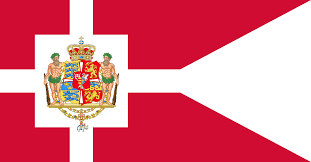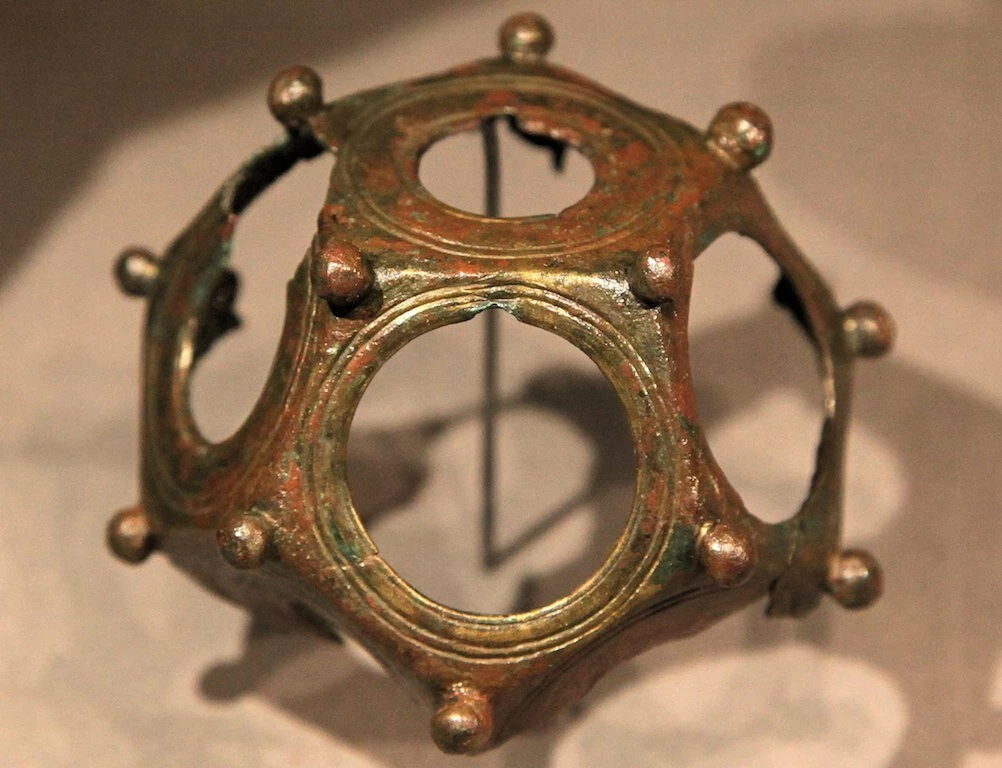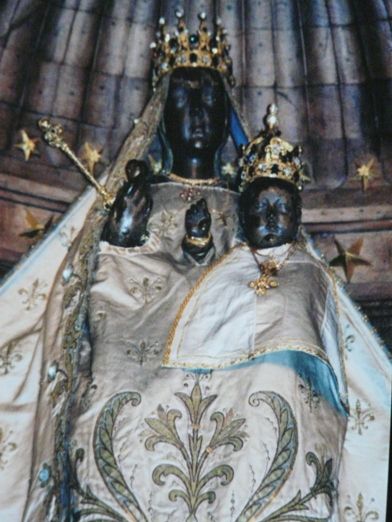
Of all the differed parts of African womanhood, none are more captivating than the many portrayals of Dark Madonnas. In reality, the Dark Madonnas of Europe are the most worshiped symbols in all of the European Christian world. Their places of worship have pulled in a massive number of fans. They are believed to be wonder labourers, and their marvel working forces got from their obscurity.
In Russia during the nineteenth century, the observed Russian General Kutuzov had his military supplicate before the Dark Madonna of Kazan before the notable fight with the Napoleonic armed force at Borodino. A similar Madonna is said to have animated Rasputin and may now be in the US. In any event, two significant depictions of Dark Madonnas are in plain view in the Kremlin, in Moscow.
About La Moreneta (the Little Dark Woman), the Dark Madonna of Montserrat, Spain – over 1,000 years of age and the patroness of the Catalonian area. It is said, “He isn’t all around marry who has not taken his better half to Montserrat.” She is responsible for sexuality and ripeness and directs weddings and labour. In the mountains north of Barcelona, La Moreneta’s holy place has pulled in a great many guests, including Pope John Paul II. Both Goethe and Schiller joined incredible significance to Montserrat.
France likely has a higher number of portrayals of Dark Madonnas than some other nation. France has an excess of 300 depictions of Dark Madonnas, a central focus of which is Chartres – a peaceful little town around 85 kilometres southwest of Paris. The most remarkable of the Dark Madonna pictures in Chartres is called Notre-Lady du Pilier (Our Woman of the Column). This portrayal, about a meter high, of a Dark Madonna statue made of ordinary wood set on a column holding the baby Jesus. Both the Madonna and Kid are hued a dim dark coloured and are wearing white robes weaved with gold. The pictures are exceptionally adored, particularly among Catholics. I admit even I, out of regard, got down on the two knees during my two visits to the House of God and murmured a supplication.
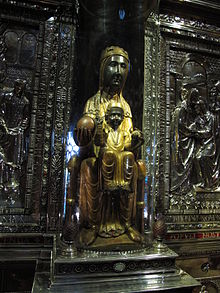
The House of God at Chartres is an enormous and beautiful structure over 800 years of age and having magnificent unique blue recoloured glass windows. In any event two of which have Dark Madonna figures directly in the middle. A duplicate of a unique Dark Madonna statue remains in a tomb underneath the fundamental church building.
Many accept that the Dark Madonnas of Europe speak to remnants of the reverence of the African goddess Ast, also called Isis. Notre Woman House of prayer, the Church of Our Woman of Paris, thought about a gem of Gothic engineering and at the focal point of Paris, was constructed straightforwardly over an antiquated sanctuary of this rare African divinity. The name Paris derived from Park of Isis.
In the calm House of prayer of the Assembly of S. Thomas of Villeneuve in a peaceful setting in the Parisian suburb of Neuilly-sur-Seine, stands one of the most significant of the Dark Madonna statues. She is La Vierge Noire de Paris (the Dark Virgin of Paris) and comprises of a two meter-high standing statue. Individual square of hard limestone, of a grinning Dark Madonna holding the Christ youngster (the baby wears firmly trimmed nappy light hair) and employing a sort of wand or staff topped by the flour de lys – the image of the French government. On her head sits a gold crown inserted with valuable stones. The statue is wearing an outfit of vibrant red, blue, and white hues, the shades of the French banner. The Christ youngster himself is holding a brilliant cross and the whole picture is accepted to be over 500 years of age, and most likely supplanted a lot before one.
One of the most significant Dark Madonnas in France is Our Woman of Le Puy. Situated in the southern piece of France, the statue may have initially been that of Ast/Isis. At Le Puy pope Urban II held gathering to get ready for the Primary Campaign. Joan of Circular segment sent the knights that went with her from Vaucouleurs to Chinon, alongside her mom and two siblings, to Le Puy to supplicate there.
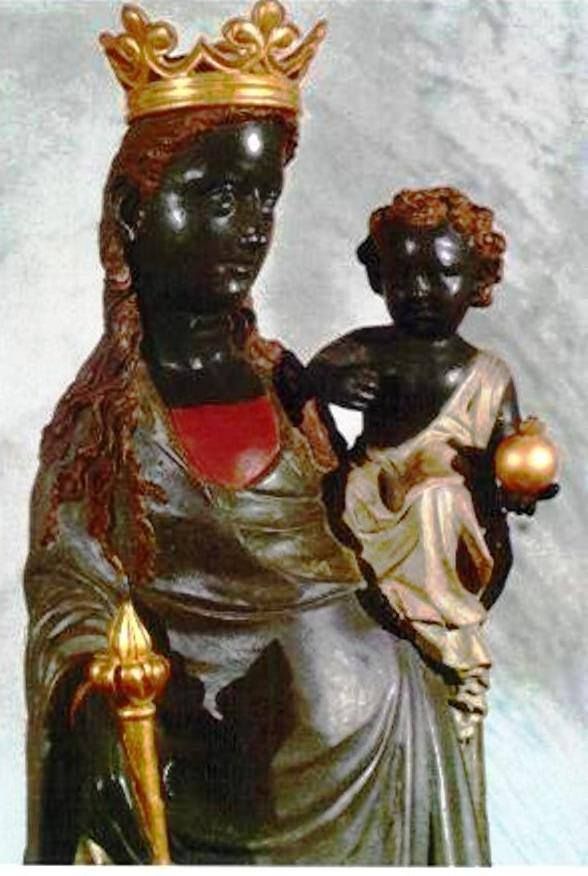
Our Woman of Rocamadour, a Dark Madonna cut of pecan wood, is accepted to be over 1,000 years of age. She is said to revive babies, secure mariners, free hostages, and advance fruitfulness. To contact her sanctum in southwest France, one must trip 216 stages. Among her, progressively eminent guests have been St. Louis of France and Henry II of Britain.
La Negre, the Dark Madonna of Montpellier, is one of the most eminent of the Dark Madonnas of France. She is said to have been performing supernatural occurrences since 878 and is accepted to have spared Montpellier from dry season and plague.
A different well known Dark Madonnas discovered dissipated all through Europe, with the absolute most remarkable models in Germany, Belgium, Italy, Switzerland, and Poland. Of the several Dark Madonnas which by and by exist at arranged holy places in Europe, some are particularly critical.
Our Woman of Hal, in the Congregation of St. Martin, only outside of Brussels, Belgium, dating from the mid-thirteenth century, is made of pecan, is accepted to have guarded the town on various events. She is admitted to mend affliction and reestablish the dead and covered to live. Her journey and parade are on the primary Sunday in September.
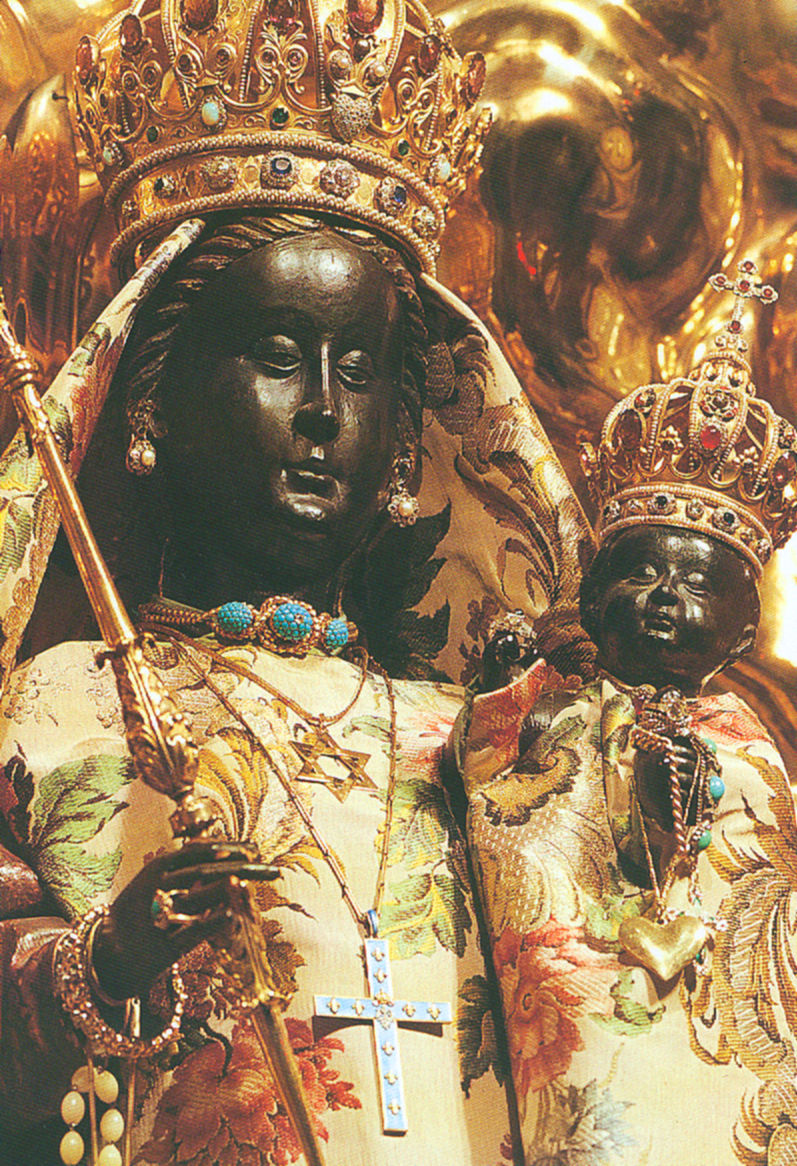
Our Woman of the Recluses in Einsiedeln, Switzerland, positions as one of the most adored everything being equal, situated in a Benedictine convent, her titles incorporate. Bite the dust Schwarze Madonna, Madonna In obscurity Wood, and Our Dear Woman of Einsiedeln. She is a standing statue, four feet tall. The Dark Holy person Maurice is one of the supporters of the Congregation.
Also, likely the most well known Dark Madonna picture on the planet is Our Woman of Jasna Gora (named the Sovereign of Poland by Ruler John Casimir in 1656) in the Jasna Gora sanctuary at Czestochowa, Poland. Painted on three bits of wood (either lime or cypress or cedar), the Dark Madonna at Czestochowa, probably found in Jerusalem, landed at the Jasna Gora sanctuary in the fourteenth century. Since her appearance, her contributions have included a large number of precious stones and rubies, many pearls, and many emeralds and sapphires.
Wounded, sliced, and battered, strutted before dominant armed forces, the Sovereign of Poland has experienced numerous reclamations and has continuously kept her dull composition. More than 800 duplicates of the Dark Madonna of Czestochowa exist. A great many guests a year come to see her.


